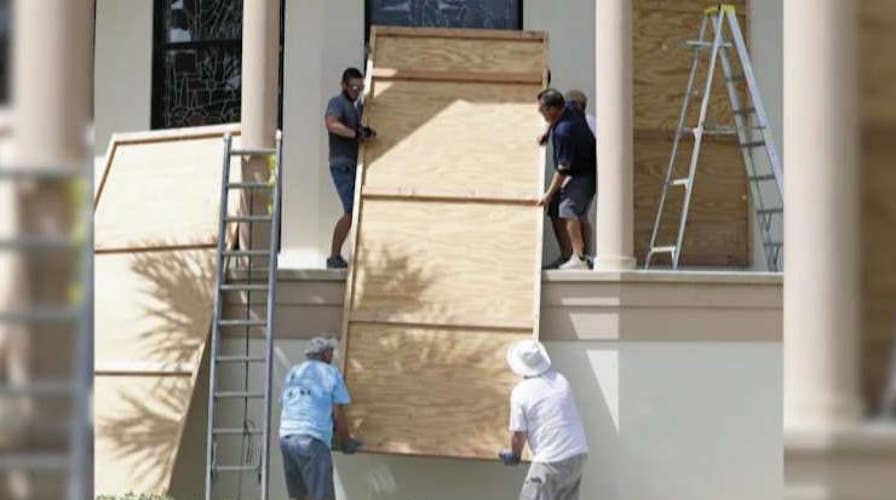Florida residents brace for Hurricane Dorian's unpredictable path
Rep. Donna Shalala says no one is ever ready for a Category 4 or Category 5 hurricane.
After disasters, we often see the best of America. Neighbors helping neighbors, the bravery of first responders, and an outpouring of support, volunteerism, and goods and services for those affected. As a nation, we are pretty good at “winning the response.” But response and recovery are very different endeavors.
Response is early, visible, urgent and fast. In the weeks and months following the disaster, many families remain displaced with no means to recover and no clear path home. Long-term recovery can be agonizingly slow.
We saw that with Katrina, and volunteering in St. Bernard Parish after that storm is what led Zack Rosenburg and Liz McCartney to create the St. Bernard Project, now SBP, a national organization dedicated to preventing people from being pushed beyond their breaking point after a disaster.
HURRICANE DORIAN'S PATH: WHAT YOU NEED TO KNOW
Over the past 14 years, we’ve seen too many American citizens suffer because of three main factors: a delay between disaster and recovery, lack of a clear and predictable path forward, and lack of access to resources. Based on our experience in 12 communities across the country, we offer the following suggestions for those in Dorian’s path:
1. Survivors must be prepared to fiercely advocate for themselves.
Disaster survivors cannot receive any type of federal assistance without first completing an application. It is the responsibility of survivors to apply for any and all assistance needed, while supplying all the supporting documentation. If applicants disagree with a decision, it is their right and responsibility to appeal that decision. The more accurately damage is reported, the better sense government, philanthropy, and service organizations will have about immediate and long-term recovery needs.
Over the past 14 years, we’ve seen too many American citizens suffer because of three main factors: a delay between disaster and recovery, lack of a clear and predictable path forward and lack of access to resources.
During a recovery training hosted by SBP in Paradise, Calif., in February, one resident shared that she had received six denials from the Federal Emergency Management Agency (FEMA) before finally receiving assistance. She would have given up but her 89-year-old mother intervened and drove her back to apply one last time.
2. Government must increase the predictability of recovery resources.
We’ve seen much greater flexibility and creativity by FEMA and the Department of Housing and Urban Development (HUD). That said, accurate, timely and fair damage inspections are needed, both for individual citizens and to enable federal appropriations and allocation processes to work more efficiently.
FEMA has begun exploring newer technologies, though its current method of damage assessment is susceptible to human error and is extremely time-consuming. Inspectors use pad and pen, or tablet devices, visually inspecting one home at a time and manually inputting information.
State and local government leaders should test the accuracy of the data they receive to ensure it is an accurate representation of damage and of individual and community needs. At the same time, construction and insurance companies are integrating technologies such as satellite imagery and flyover images into their practices. FEMA should continue to investigate and test the benefits of these newer methods of evaluation.
3. Americans should rethink charitable giving after a disaster and focus on both response and recovery.
After a disaster, 70 to 80 percent of total monetary donations are raised within the first two weeks, with most stakeholders opting to give to disaster relief and response organizations. In the ensuing weeks and months, many families remain displaced.
To address this glaring need, American’s must understand that charitable giving from businesses and corporations, individual donors and major foundations play a critical role in the first two to three years of a community’s recovery.
CLICK HERE TO GET THE OPINION NEWSLETTER
These entities provide the raw materials for communities to build a bridge from the day the storm makes landfall to the arrival of federal assistance, some two years later. If corporations, foundations and individuals better understand the need, they can give to support long-term recovery efforts that enable families to return home — minimizing unnecessary suffering caused by a delayed recovery.
In Houston, J.J. Watt, the Houston Texans defensive lineman, recognized the value of long-term rebuilding after Hurricane Harvey. Watt’s foundation granted funding to SBP, which enabled us to build 100 homes in the first year. SBP then trained and sub-granted funding and AmeriCorps members to seven other smaller nonprofits, which also began rebuilding for families in need. At the two-year anniversary of Harvey, SBP and its partners have rebuilt 285 homes. Future recoveries will be better resourced if donors remember to support both the response and the recovery when planning charitable giving.
CLICK HERE TO GET THE FOX NEWS APP
Wherever Dorian makes landfall, Americans will do their part to help. Some will donate or volunteer—assisting communities and families regain what was lost.
Recent college graduates and civic-oriented individuals will join AmeriCorps and complete a term of service to drive meaningful results for fellow citizens. But despite the best intentions of many, the recovery process will be painfully long and slow. We can do better. Keeping these three issues in mind is a good place to start.

